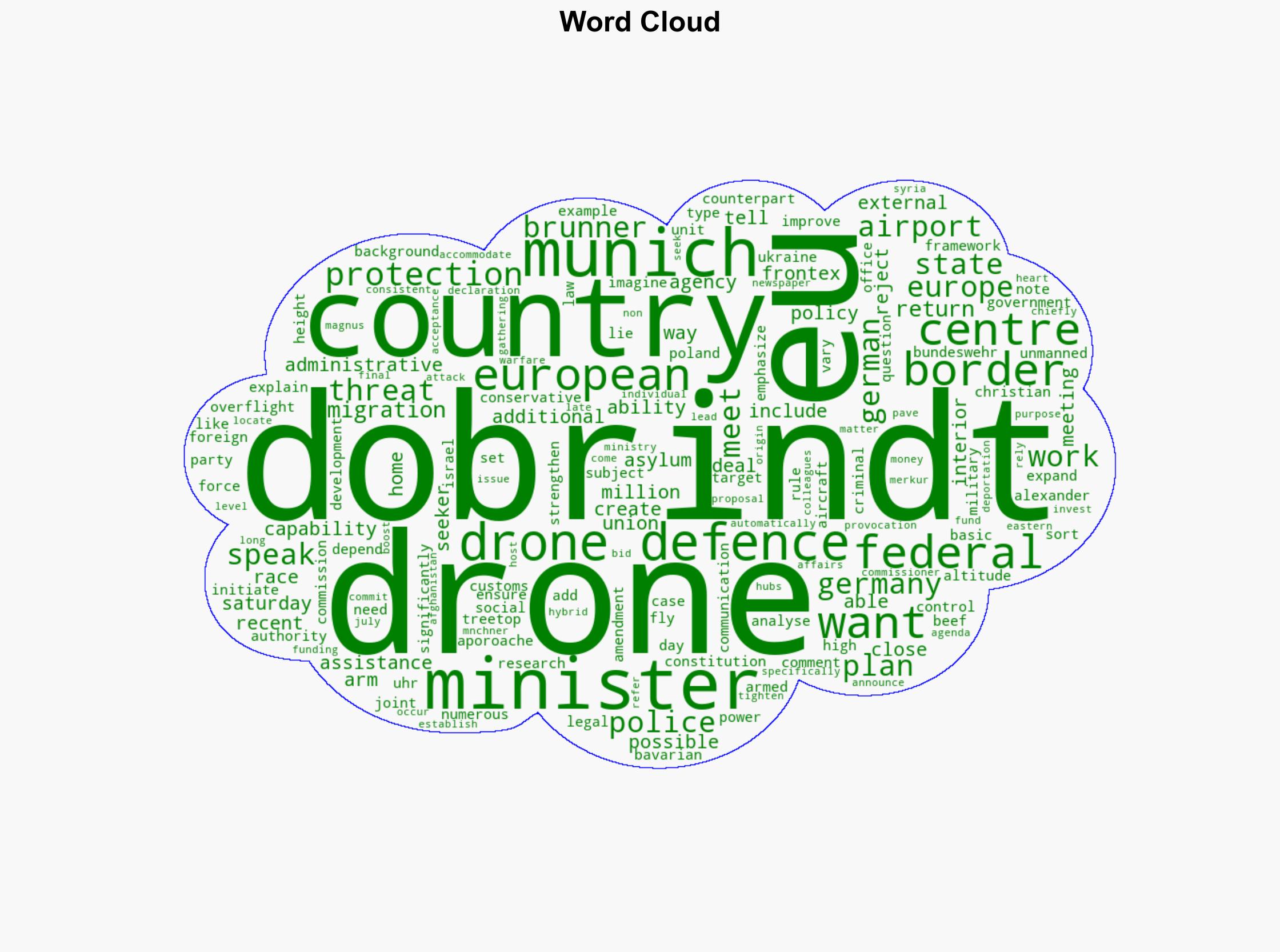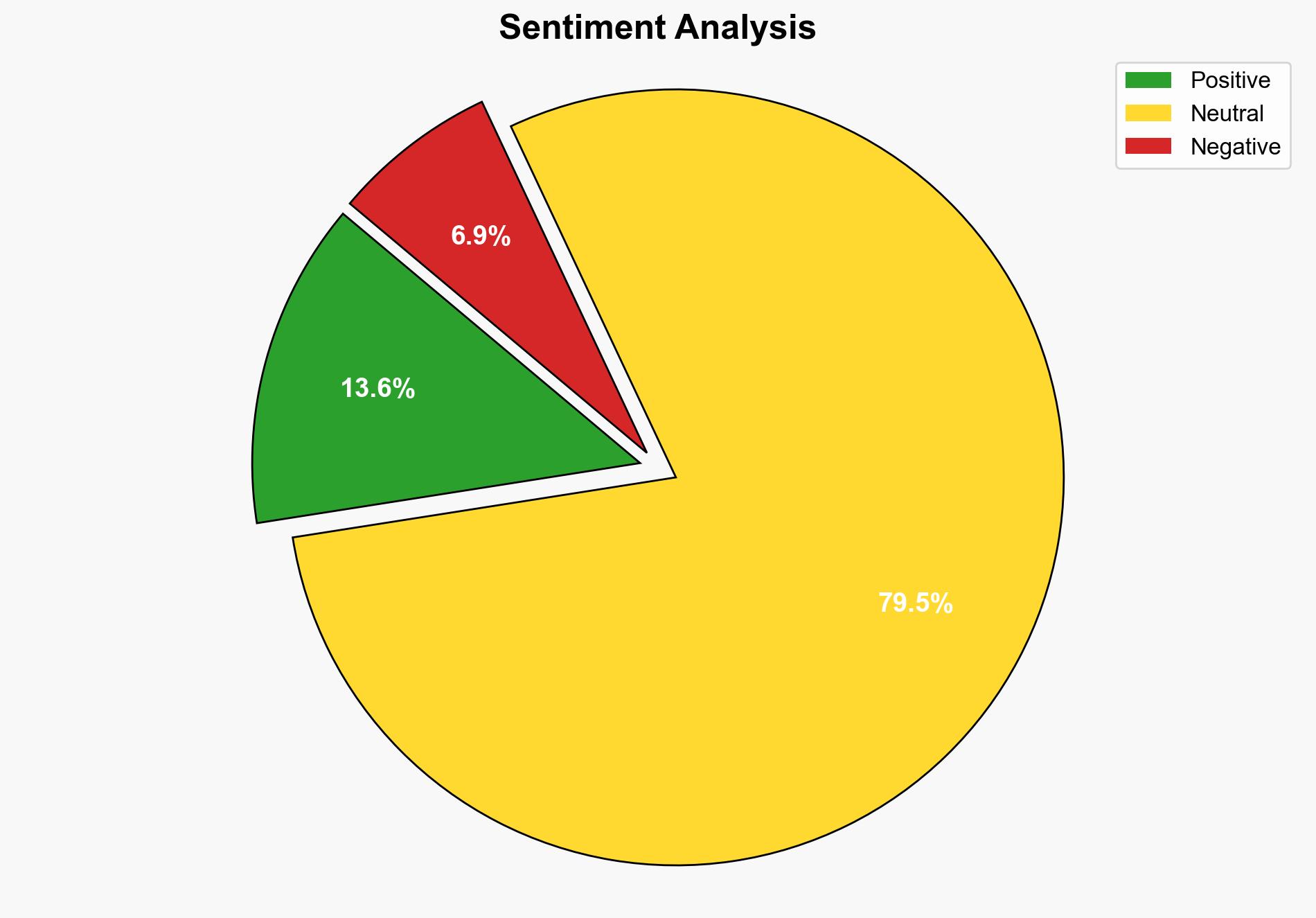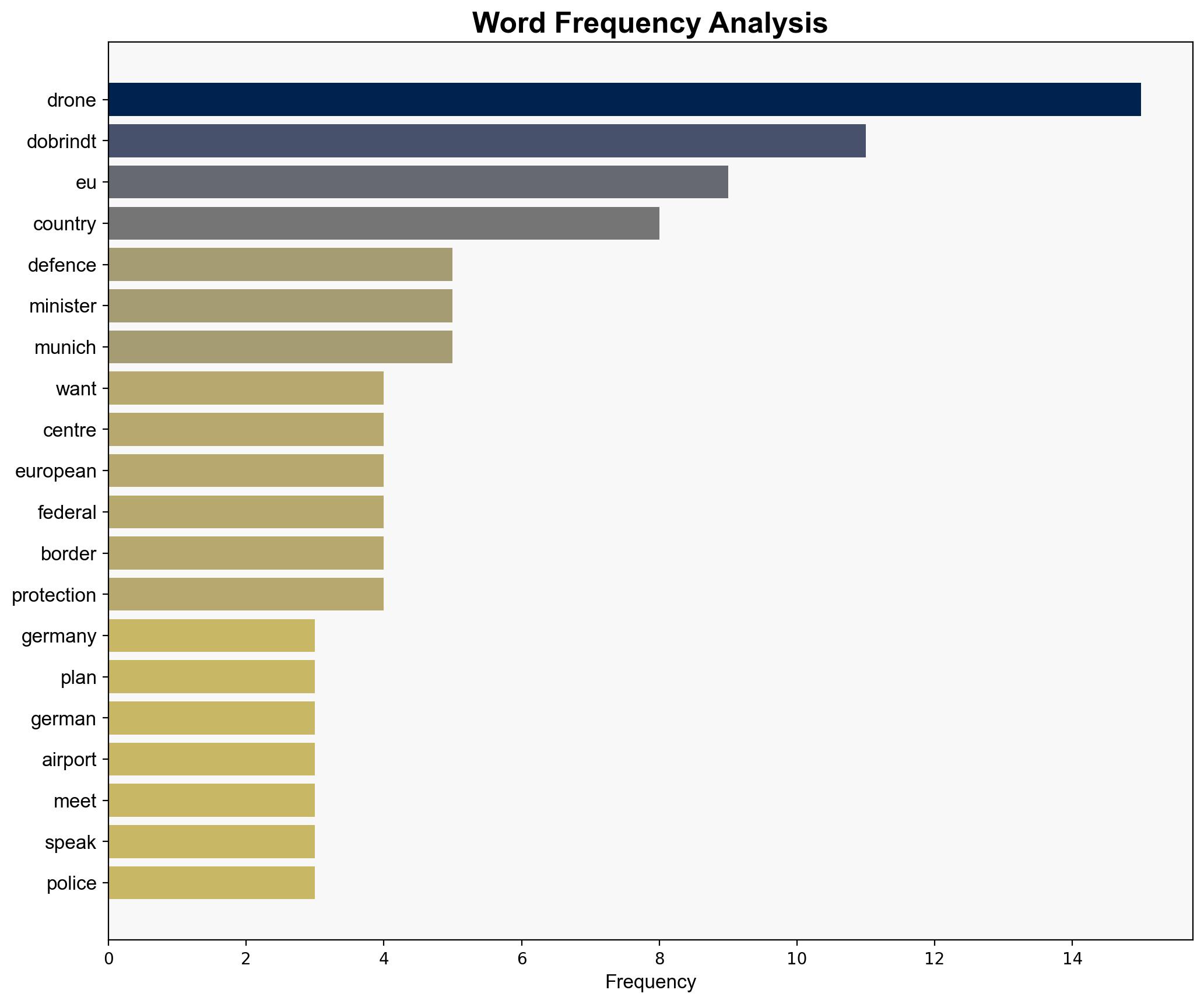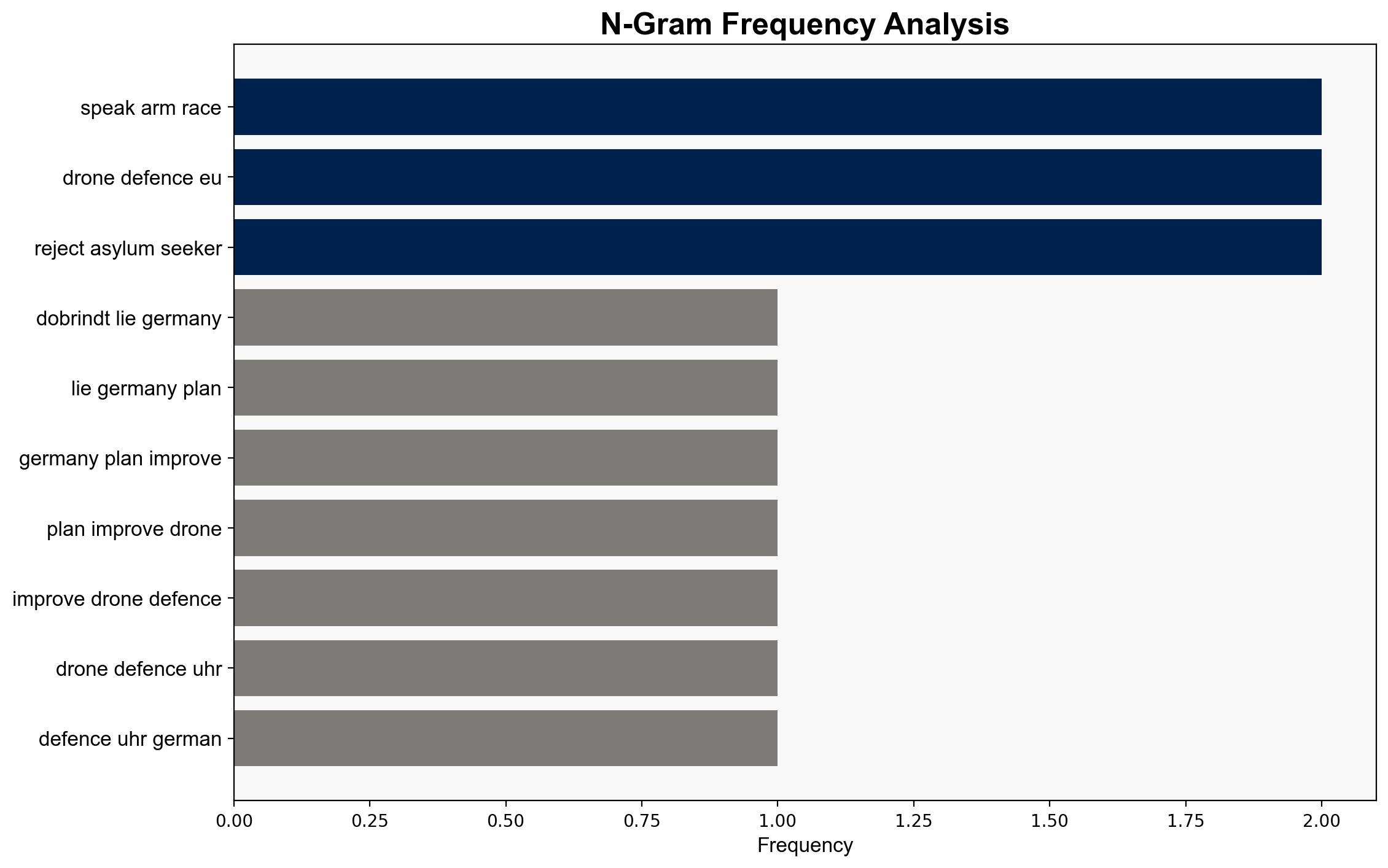Dobrindt lays out Germany’s plans for improved drone defence – Dpa-international.com
Published on: 2025-10-04
Intelligence Report: Dobrindt lays out Germany’s plans for improved drone defence – Dpa-international.com
1. BLUF (Bottom Line Up Front)
Germany is advancing its drone defense capabilities amid increasing threats from unmanned aerial vehicles (UAVs). The most supported hypothesis is that Germany aims to enhance national security by integrating federal and state resources to counter potential drone threats. Confidence level: Moderate. Recommended action includes establishing a legal framework for military involvement in domestic drone defense and increasing collaboration with EU partners.
2. Competing Hypotheses
Hypothesis 1: Germany’s initiative is primarily a response to recent drone overflights at airports, aiming to prevent immediate security threats and ensure public safety.
Hypothesis 2: The initiative is part of a broader strategic move to position Germany as a leader in drone defense technology within the EU, leveraging this capability for geopolitical influence and security collaboration.
Using the Analysis of Competing Hypotheses (ACH) 2.0, Hypothesis 1 is better supported due to the immediate context of recent drone incidents and the emphasis on federal-state cooperation. Hypothesis 2 lacks direct evidence but remains plausible given the EU’s broader security dynamics.
3. Key Assumptions and Red Flags
Assumptions include the belief that drone threats are escalating and require immediate action. There is an assumption that federal and state cooperation will be seamless. A red flag is the potential underestimation of the complexity in integrating military and civilian drone defense efforts. Missing data includes specific details on the types of drones posing threats and the technological capabilities being developed.
4. Implications and Strategic Risks
The integration of military and civilian resources could lead to jurisdictional conflicts. Economically, increased spending on drone defense may divert funds from other security areas. Geopolitically, Germany’s move could provoke neighboring countries to enhance their own drone capabilities, potentially leading to an arms race. Cybersecurity risks include the potential for drone systems to be hacked, leading to unintended escalations.
5. Recommendations and Outlook
- Establish a clear legal framework for military involvement in domestic drone defense to avoid jurisdictional conflicts.
- Enhance EU collaboration to share intelligence and resources, reducing duplication of efforts.
- Scenario-based projections:
- Best Case: Successful integration of resources leads to enhanced security and EU leadership in drone defense.
- Worst Case: Jurisdictional conflicts and technological failures undermine defense efforts, leading to increased vulnerabilities.
- Most Likely: Gradual improvement in drone defense capabilities with moderate EU collaboration.
6. Key Individuals and Entities
Alexander Dobrindt, Magnus Brunner, European Commission, Frontex
7. Thematic Tags
national security threats, cybersecurity, counter-terrorism, regional focus





